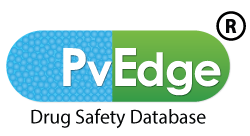Signal detection (SD) involves a set of activities performed to determine whether, based on an examination of individual case safety reports (ICSRs), aggregated data from active surveillance systems or studies, scientific literature information or other data sources, there are new risks associated with an active substance or a medicinal product or whether known risks have changed.
With the growing importance of Risk management and Signal Detection for Pharmacovigilance, MAHs are expected to deploy state-of-the-art methodologies and look for best quality evidence to satisfy the needs and meet the expectation of regulators, patients and the public at large. With electronic data capture and electronic reporting becoming mandatory, there is a fast accruing safety dataset that needs to be reviewed in a structured and auditable manner.

Why PvEdge®?
- PvEdge® offers a summary tabulation report of AEs, from which a user can identify interval and cumulative counts segregated by serious and non-serious events. This report is based on GVP module guidelines which plays vital role for risk management
- PvEdge® also offers event-based tabulation report with bifurcation of listed and unlisted event counts with date criteria of interval (period of submission) and cumulative (today’s date from MA date). Condensing this large and complex dataset into 2×2 contingency tables for disproportionality analysis, using computer-aided statistical data mining algorithms, is now a necessity than a luxury.
- PvEdge® offers a unique Signal Detection Software tool for Pharmacovigilance, combining advanced data mining algorithms with a qualitative review of each identified ICSR of interest, which is the current industry Gold standard.
Quantitative Signal Detection
It calculates the Proportional Reporting Ratio (PRR), upper bound – lower bound confidence intervals (CI’s) and also corresponding Chi-square values, for identifying statistical signals of disproportionate reporting.
Once statistical signals are identified, the database allows clinical evaluation of each ICSR for the identified SDR (Signal of Disproportionate Reporting), thus differentiating true clinical signals from statistical noise or reporting artifacts.